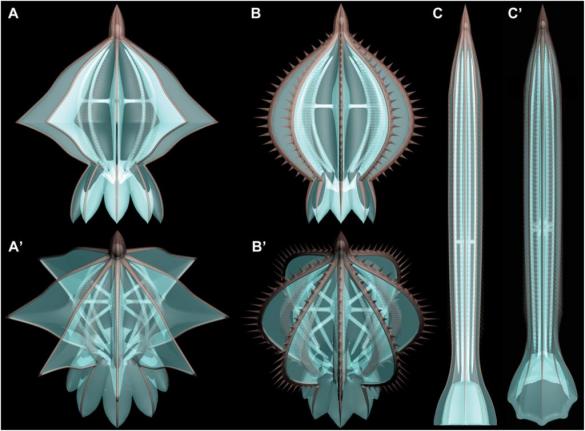New Fossils Suggest Some Jellyfish Had Skeletons, No Tentacles

WASHINGTON, July 11 (UPI) — Researchers in China have discovered rare fossils of early jellyfish suggesting some ancient species lacked tentacles and had “armored” bodies.
Today’s ctenophores, or comb jellies, are soft-bodied animals without skeletal structures and generally have non-stinging tentacles used to capture prey. A discovery of six fossils in southern China, however, suggests that early comb jellies were built a lot differently.
A research paper outlining the discovery of the ancient jellies was published in the journal Science Advances on Friday.
The fossils, believed to be from the Cambrian period 520 million years ago, are among the very few to show the impression of the early marine animals, which are now 95 percent water. Unlike the comb jellies of today, the fossilized jellies harbored hard plates, “spokes” and spines, making them tens of times more durable.
Live Science observes that some of the fossils are brand new scientific discoveries, while some others provide confirmation of earlier studies.
“I was most surprised when I realized they were skeletonized comb jellies,” said co-author Qiang Ou of Beijing’s China University of Geosciences. “That they were overlooked is more or less because such fossils are very rare.”
The Cambrian jellies most likely hunted for food like some of today’s ctenophores that also exist without tentacles: by trapping their prey with their body and swallowing them.
Like Us on Facebook for more stories from GephardtDaily.com






